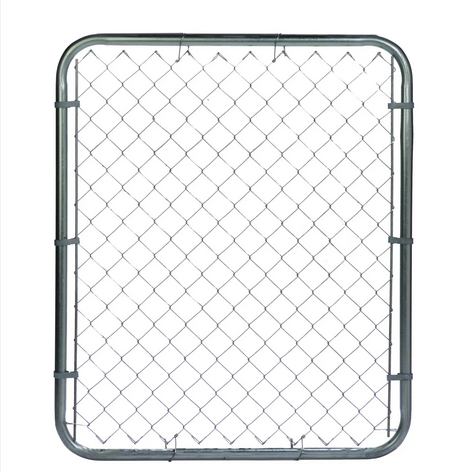
What Is a Bent Frame Gate, and How Are They Made?
Bent frame gates and even bent frame gate panels are a popular, cost-effective option for lower security and residential fence projects.
But what are bent frame gates, what are the pros and cons of using them, and how are they made? Read our mini guide to bent frame gates to find out!
What Is a Bent Frame Gate?
Normally, when you make a metal gate frame, you will weld the corners. Either you will notch the horizontal members to fit the uprights and weld them to the upright all around the notched area. Or, you might choose to miter both verticals and horizontals and then weld along the miter. It all depends on what kind of tubing you have and what your gate design is.
Bent frame gates, however, use bent tubing for the frame instead of corner welds, so instead of welding each corner and pipe intersection, you might have one or two welds on the sides or bottom of your gate.
What Are the Benefits of Bent Frame Gates?
The biggest benefit of a bent frame gate or bent frame panel is that they tend to cost less, and the reason for that is that they are much faster to make, and you don’t need a skilled welder to make them.
They also tend to be made from thinner tubing, so they’re usually quite lightweight, making them easy to use and even to install as a DIY project.
What Are the Drawbacks of Bent Frame Gates?
The biggest drawback of bent frame gates is that they are lightweight, which makes them unsuitable for any projects that need to have even a moderate level of security.
The curves on the top and bottom of the frame can also make it trickier to install certain parts on the gate. If you are using tension bars, you might need to cut them down to size, and the same goes for privacy slats. If you’re installing them on your bent frame gate, you will need to cut them to follow the curve if you want your gate to look properly finished.
How Are Bent Frame Gates Made?
|
Many people wonder how bent frame gates are made, and the answer is simple: using a pipe bender. A pipe bender is a hydraulic device that works with dies or forms and that applies hydraulic force or pressure on the pipe in that form. The pipe is measured and marked on the position of the bends, and then the pipe is fed into the bender to the mark, and the bender is turned on. The whole process takes a matter of minutes, as opposed to a considerably longer time for cutting, welding, and finishing welds. |
What Are the Potential Issues of Using a Pipe Bender?
The biggest issue with using a pipe bender aside from the safety considerations (you want to know what you’re doing when you’re working with this machine!) is that the pipe will deform at the bends.
The main reason this happens is that the wall thickness of the pipe or tubing you are bending is too thin, and it can’t stand up to the bending process.
It’s also worth noting that with the right pipe bender, you can put a curve in nearly any material. Many years ago, I was working on a project that required us to bend 4-inch posts with a quarter-inch wall, and they were curved very easily on a machine that usually bends railway tracks.
Where to Find Bent Frame Gates?
Finally, let’s look at where you can find bent-frame gates. These gates are often easy to find at hardware stores and building supply retailers. Many chain-link fence companies that do commercial fencing won’t carry them at all, but some that offer residential fencing might offer this kind of gate.
If you’re considering a bent frame gate for your fence project, be sure to look at other options too. The more information you have about all your options, the better equipped you will always be to make the right decision.



